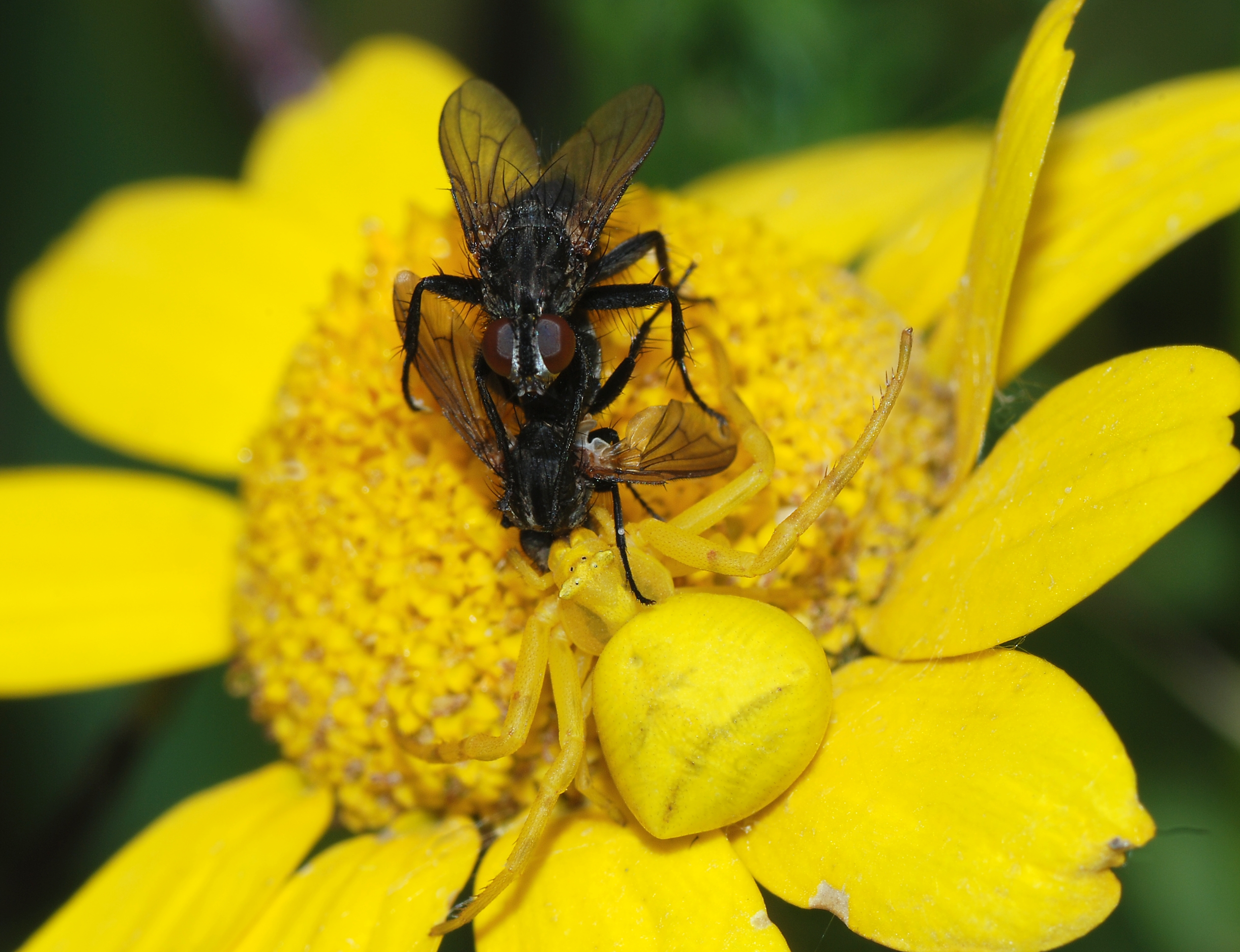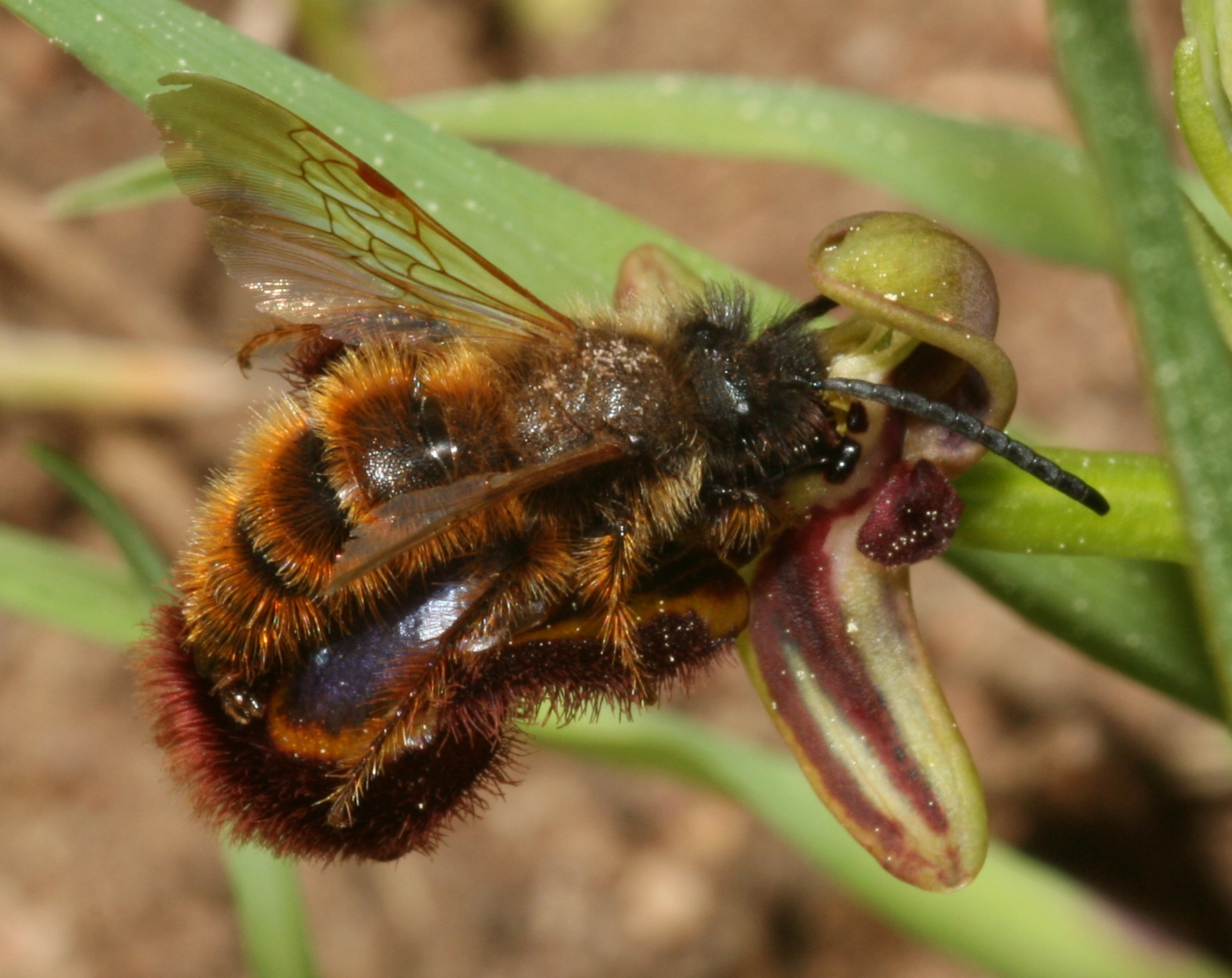|
Allomerus Decemarticulatus
''Allomerus decemarticulatus'' is an Amazonian ant species found in the tropics of South America. This species is most notable for the workers’ complex and extreme predatory behavior, which involves a symbiosis with both a plant and fungal species. They live in leaf pockets of a host plant species, '' Hirtella physophora''. These leaf pockets are areas inside of the plant between the leaves and the stem. Each colony, which consists of about 1,200 workers, inhabits a single tree; however, the ants are spread among the leaf pockets, with typically 40 workers per pocket. Their diet primarily consists of large insects that are captured on the plant, but they also eat some kinds of food bodies produced by the plant as well as its nectar. They are able to capture their prey, which is much larger than themselves, by constructing a platform that acts as a trap for the unsuspecting prey. The ants hide in the trap and attack when any insect lands on it. This technique is an exampl ... [...More Info...] [...Related Items...] OR: [Wikipedia] [Google] [Baidu] |
Gustav Mayr
Gustav L. Mayr (12 October 1830 – 14 July 1908) was an Austrian entomologist and professor in Budapest and Vienna. He specialised in Hymenoptera, being particularly known for his studies of ants.1908. Obituary. Prof. Gustav Mayr. Entomological News 19:396 Bibliography In 1868, he was the first to describe the . He is credited with naming the harvesting ant species, ''Aphaenogaster treatae'', for naturalist Mary Davis Treat, in honor of ... [...More Info...] [...Related Items...] OR: [Wikipedia] [Google] [Baidu] |
Ambush Predator
Ambush predators or sit-and-wait predators are carnivorous animals that capture or trap prey via stealth, luring or by (typically instinctive) strategies utilizing an element of surprise. Unlike pursuit predators, who chase to capture prey using sheer speed or endurance, ambush predators avoid fatigue by staying in concealment, waiting patiently for the prey to get near, before launching a sudden overwhelming attack that quickly incapacitates and captures the prey. The ambush is often opportunistic, and may be set by hiding in a burrow, by camouflage, by aggressive mimicry, or by the use of a trap (e.g. a web). The predator then uses a combination of senses to detect and assess the prey, and to time the strike. Nocturnal ambush predators such as cats and snakes have vertical slit pupils helping them to judge the distance to prey in dim light. Different ambush predators use a variety of means to capture their prey, from the long sticky tongues of chameleons to the expandin ... [...More Info...] [...Related Items...] OR: [Wikipedia] [Google] [Baidu] |
Coevolution
In biology, coevolution occurs when two or more species reciprocally affect each other's evolution through the process of natural selection. The term sometimes is used for two traits in the same species affecting each other's evolution, as well as gene-culture coevolution. Charles Darwin mentioned evolutionary interactions between flowering plants and insects in ''On the Origin of Species'' (1859). Although he did not use the word coevolution, he suggested how plants and insects could evolve through reciprocal evolutionary changes. Naturalists in the late 1800s studied other examples of how interactions among species could result in reciprocal evolutionary change. Beginning in the 1940s, plant pathologists developed breeding programs that were examples of human-induced coevolution. Development of new crop plant varieties that were resistant to some diseases favored rapid evolution in pathogen populations to overcome those plant defenses. That, in turn, required the development of ... [...More Info...] [...Related Items...] OR: [Wikipedia] [Google] [Baidu] |
Parasitism
Parasitism is a Symbiosis, close relationship between species, where one organism, the parasite, lives on or inside another organism, the Host (biology), host, causing it some harm, and is Adaptation, adapted structurally to this way of life. The entomologist E. O. Wilson has characterised parasites as "predators that eat prey in units of less than one". Parasites include single-celled protozoans such as the agents of malaria, sleeping sickness, and amoebic dysentery; animals such as hookworms, lice, mosquitoes, and vampire bats; fungi such as Armillaria mellea, honey fungus and the agents of ringworm; and plants such as mistletoe, dodder, and the Orobanchaceae, broomrapes. There are six major parasitic Behavioral ecology#Evolutionarily stable strategy, strategies of exploitation of animal hosts, namely parasitic castration, directly transmitted parasitism (by contact), wikt:trophic, trophicallytransmitted parasitism (by being eaten), Disease vector, vector-transmitted paras ... [...More Info...] [...Related Items...] OR: [Wikipedia] [Google] [Baidu] |
Nectar
Nectar is a sugar-rich liquid produced by plants in glands called nectaries or nectarines, either within the flowers with which it attracts pollinating animals, or by extrafloral nectaries, which provide a nutrient source to animal mutualists, which in turn provide herbivore protection. Common nectar-consuming pollinators include mosquitoes, hoverflies, wasps, bees, butterflies and moths, hummingbirds, honeyeaters and bats. Nectar plays a crucial role in the foraging economics and evolution of nectar-eating species; for example, nectar foraging behavior is largely responsible for the divergent evolution of the African honey bee, ''A. m. scutellata'' and the western honey bee. Nectar is an economically important substance as it is the sugar source for honey. It is also useful in agriculture and horticulture because the adult stages of some predatory insects feed on nectar. For example, a number of parasitoid wasps (e.g. the social wasp species ''Apoica flavissima'') rely ... [...More Info...] [...Related Items...] OR: [Wikipedia] [Google] [Baidu] |
Petiole (botany)
In botany, the petiole () is the stalk that attaches the leaf blade to the stem, and is able to twist the leaf to face the sun. This gives a characteristic foliage arrangement to the plant. Outgrowths appearing on each side of the petiole in some species are called stipules. Leaves with a petiole are said to be petiolate, while leaves lacking a petiole are called sessile or apetiolate. Description The petiole is a stalk that attaches a leaf to the plant stem. In petiolate leaves, the leaf stalk may be long, as in the leaves of celery and rhubarb, or short. When completely absent, the blade attaches directly to the stem and is said to be sessile. Subpetiolate leaves have an extremely short petiole, and may appear sessile. The broomrape family Orobanchaceae is an example of a family in which the leaves are always sessile. In some other plant groups, such as the speedwell genus '' Veronica'', petiolate and sessile leaves may occur in different species. In the grasses (Poaceae), ... [...More Info...] [...Related Items...] OR: [Wikipedia] [Google] [Baidu] |
Domatia
A domatium (plural: domatia, from the Latin "domus", meaning home) is a tiny chamber that houses arthropods, produced by a plant. Ideally domatia differ from galls in that they are produced by the plant rather than being induced by their inhabitants, but the distinction is not sharp; the development of many types of domatia is influenced and promoted by the inhabitants. Most domatia are inhabited either by mites or ants, in what can be a Mutualism (biology), mutualist relationship, but other arthropods such as thrips may take parasitic advantage of the protection offered by this structure. Domatia occupied by ants are called myrmecodomatia. An important class of myrmecodomatia comprise large, hollow spines of certain acacias such as ''Acacia sphaerocephala'', in which ants of the genera ''Pseudomyrmex'' and ''Tetraponera'' make their nests. Plants that provide myrmecodomatia are called myrmecophytes. The variety of the plants that provide myrmecodomatia, and the ranges of forms ... [...More Info...] [...Related Items...] OR: [Wikipedia] [Google] [Baidu] |
Myrmecophyte
Myrmecophytes (; literally "ant-plant") are plants that live in a mutualistic association with a colony of ants. There are over 100 different genera of myrmecophytes. These plants possess structural adaptations that provide ants with food and/or shelter. These specialized structures include domatia, food bodies, and extrafloral nectaries. In exchange for food and shelter, ants aid the myrmecophyte in pollination, seed dispersal, gathering of essential nutrients, and/or defense. Specifically, domatia adapted to ants may be called myrmecodomatia. Mutualism Myrmecophytes share a mutualistic relationship with ants, benefiting both the plants and ants. This association may be either facultative or obligate. Obligate mutualism In obligate mutualisms, both of the organisms involved are interdependent; they cannot survive on their own. An example of this type of mutualism can be found in the plant genus ''Macaranga''. All species of this genus provide food for ants in various ... [...More Info...] [...Related Items...] OR: [Wikipedia] [Google] [Baidu] |
Undergrowth
Undergrowth usually refers to the vegetation in the lower part of a forest, which can obstruct passage through the forest. The height of undergrowth is usually considered to be 0.3 – 3 m (1 – 9 ft.). Undergrowth can also refer to all vegetation in a forest which is not in the canopy. See also *Forest floor *Understory In forestry and ecology, understory (American English), or understorey (Commonwealth English), also known as underbrush or undergrowth, includes plant life growing beneath the forest canopy without penetrating it to any great extent, but abov ... Forest ecology {{Botany-stub ... [...More Info...] [...Related Items...] OR: [Wikipedia] [Google] [Baidu] |
Rainforest
Rainforests are characterized by a closed and continuous tree canopy, moisture-dependent vegetation, the presence of epiphytes and lianas and the absence of wildfire. Rainforest can be classified as tropical rainforest or temperate rainforest, but other types have been described. Estimates vary from 40% to 75% of all biotic species being indigenous to the rainforests. There may be many millions of species of plants, insects and microorganisms still undiscovered in tropical rainforests. Tropical rainforests have been called the "jewels of the Earth" and the " world's largest pharmacy", because over one quarter of natural medicines have been discovered there. Rainforests as well as endemic rainforest species are rapidly disappearing due to deforestation, the resulting habitat loss and pollution of the atmosphere. Definition Rainforest are characterized by a closed and continuous tree canopy, high humidity, the presence of moisture-dependent vegetation, a moist layer of lea ... [...More Info...] [...Related Items...] OR: [Wikipedia] [Google] [Baidu] |
Annals Of Botany
''Annals of Botany'' is a monthly peer-reviewed scientific journal publishing experimental, theoretical and applied papers on all aspects of plant biology. The current (2022) Chief Editor is Rowan Sage, replacing John Seymour (Pat) Heslop-Harrison (University of Leicester, UK and the South China Botanical Garden appointed in 2008). The journal is owned and managed by thAnnals of Botany Company a non-profit educational charity registered with the Charity Commission for England and Wales. It is published monthly through Oxford University Press in paper form and online, and is paid for primarily by institutional annual subscriptions. Regular extra issues, published free-of-charge, focus on topical themes. The journal does not levy page charges but authors may choose to pay a standard fee to secure open access status for their papers. According to ''Journal Citation Reports'', in 2019 (published 2020) ''Annals of Botany''’s impact factor was 4.005 and was ranked 27th out of 234 jou ... [...More Info...] [...Related Items...] OR: [Wikipedia] [Google] [Baidu] |
Naturwissenschaften
''The Science of Nature'', formerly ''Naturwissenschaften'', is a monthly peer-reviewed scientific journal published by Springer Science+Business Media covering all aspects of the natural sciences relating to questions of biological significance. It was founded in 1913 and intended as a German-language equivalent of the English-language journal ''Nature'', at a time when German was still a dominant language of the natural sciences. The journal is now published in English. History ''Die Naturwissenschaften'' was founded in 1913 by Arnold Berliner and published by Julius Springer Verlag. Berliner intended to create a German equivalent to the English-language journal ''Nature''. The original subtitle ''Wochenschrift für die Fortschritte der Naturwissenschaften, der Medizin und der Technik'' (''Weekly Publication of the Advances in the Natural Sciences, Medicine and Technology'') was later changed to its current ''The Science of Nature''. The journal is published monthly and the art ... [...More Info...] [...Related Items...] OR: [Wikipedia] [Google] [Baidu] |






